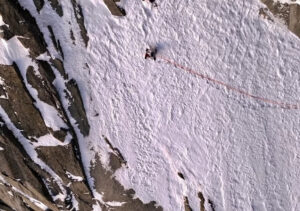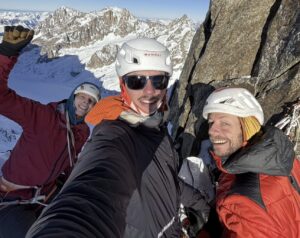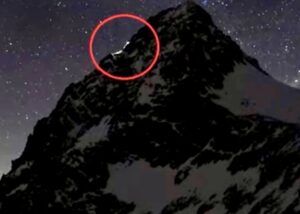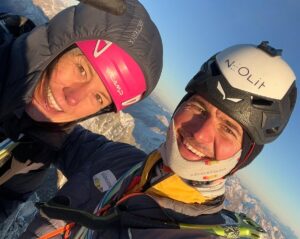A mountaineering dispute continues to simmer after climber Stephan Siegrist questioned a new speed record set by Nicolas Hojac and Philipp Brugger. Brugger and Hojac had climbed the north faces of the Eiger, Mönch, and Jungfrau in Switzerland’s Bernese Oberland in April 2025.
The controversy then expanded, with some questioning Siegrist’s 2004 record with Ueli Steck. The argument raises issues about transparency, ethics, and route choices. The dispute was explained earlier this month by Swiss climbing magazine Lacrux and German mountaineering magazine Bergsteigen.
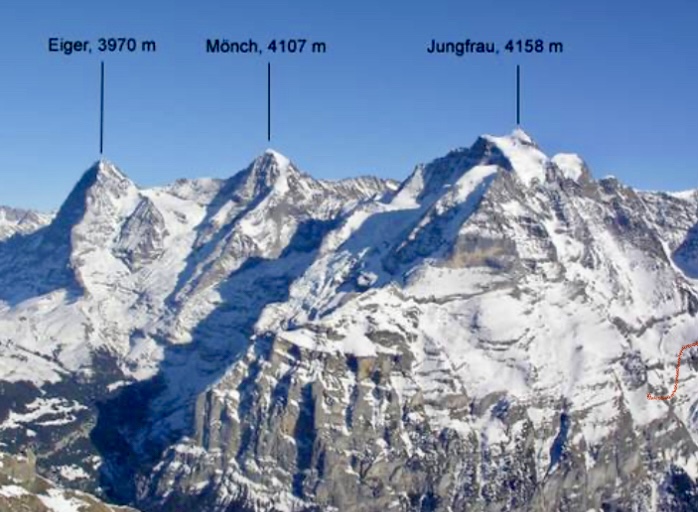
Eiger, Mönch, and Jungfrau. Photo: Contentedtraveller.com
The issue
In April 2025, Swiss climber Nicolas Hojac and Austrian Philipp Brugger set a speed record by climbing the north faces of Eiger, Mönch, and Jungfrau in 15 hours and 30 minutes. They surpassed the 2004 record set by Swiss climbers Ueli Steck and Stephan Siegrist by 9 hours and 30 minutes.

Stephan Siegrist. Photo: Schoenebergtouren.de
Hojac and Brugger praised Steck and Siegrist for their pioneering effort, but Siegrist argued their record wasn’t comparable. He alleged that Hojac and Brugger paused timing during breaks and chose a different route on the Jungfrau: the Lauper Route. According to Siegrist, the Lauper Route is not a “true” north face route, unlike the Ypsilon Couloir Route he took in 2004. He contacted their shared sponsor, who filmed the project, demanding an honest report and a correction to the press release.
Hojac and Brugger, stunned by the accusations, countered with transparency, providing GPS tracks, videos, and photos to prove they followed the classic routes Steck and Siegrist reported in 2004, including the Lauper Route on the Jungfrau. They had consulted Siegrist before their climb, relying on his documented route descriptions.

Nicolas Hojac and Philipp Brugger during their Bernese North Face Trilogy speed climb. Photo: Nicolas Hojac
Controversy shifts
The controversy shifted dramatically when Hojac and Brugger discovered that Siegrist had retroactively changed details about his 2004 climb on his website this spring. Siegrist now claimed that he and Steck climbed Jungfrau’s Ypsilon Couloir (rated EX — extremely difficult) instead of the Lauper Route. Previously, Siegrist had stated that they climbed the Lauper Route in his book, on his website, and in a pre-climb phone call with Hojac. The book, published years earlier, still lists the Lauper Route and cannot be altered, exposing Siegrist’s inconsistency.
Siegrist also recently admitted that he and Steck were aided by a 50m rope, lowered by two other climbers, to exit the Jungfrau. This detail remained hidden for 21 years.
This external assistance, deemed unethical in speed climbing, could disqualify their record because unaided ascents are standard for such feats. Hojac labeled this hidden information a “fraud.”

The late Ueli Steck. Photo: Daniel Winkler
Hojac argued Siegrist’s criticisms stemmed from jealousy. The sponsor urged a private resolution, but the public dispute revealed Siegrist’s alterations and reinforced Hojac and Brugger’s credibility.
The three North Face routes
The Bernese North Face Trilogy involves climbing the north faces of three iconic peaks: 3,967m Eiger, 4,107m Mönch, and 4,158m Jungfrau. Each presents unique challenges.

The Heckmair Route on the North Face of the Eiger. Photo: Eiger Daily
The Heckmair Route on Eiger’s North Face is a 1,800m climb on mixed terrain. It was first ascended from July 21-24, 1938, by Anderl Heckmair, Ludwig Vörg, Heinrich Harrer, and Fritz Kasparek. It is graded ED2 (extremely difficult two) in the alpine grading system, UIAA V-, and features ice climbing sections up to 70°. This route has challenging sections like the Hinterstoisser Traverse, Ice Hose, and Death Bivouac. Both duos, Siegrist-Steck and Hojac-Brugger, used this route.
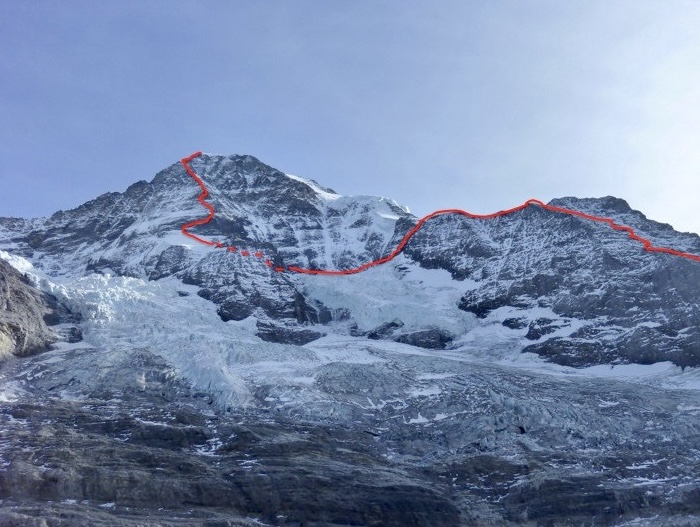
An approximate topo line of the Lauper Route on Mönch’s north face. Photo: Turbok.ch
The Lauper Route on Mönch’s North Face involves steep snow and ice. Both teams followed this route, which was first ascended on July 23, 1921, by Hans Lauper and Max Liniger. This line, also known as the North Face Rib or Nordwandrippe, is a challenging mixed climb graded TD (very difficult) that follows a prominent rib dividing Mönch’s North Face.
The recent dispute centers on the Jungfrau. Hojac and Brugger climbed the Lauper Route, documented by Steck and Siegrist in 2004. The Lauper Route was first ascended in 1934 by Hans Lauper and Alfred Zurcher. Although less difficult than the Eiger’s Heckmair Route, it involves steep terrain and a challenging exit. It’s graded around D (difficult) or higher, depending on conditions.
This spring, Siegrist claimed that he and Steck had taken the Ypsilon Couloir and not the Lauper Route. The Ypsilon Couloir was first ascended in 2001 by Siegrist and Ralph Weber, and its exit is rated EX (extremely difficult).

Jungfrau. On the left, the variant described by Siegrist/Steck before the project, with the Ypsilon Couloir as a modification of the Siegrist/Weber route. Photo: Nicolas Hojac via Lacroux
The Eiger, Mönch, and Jungfrau remain alpine benchmarks, but this controversy underscores the need for clear speed-climbing rules to ensure fair records. The trilogy dispute mirrors broader mountaineering debates, such as unscrutinized 8,000m peak records involving time, Sherpa support, or supplemental oxygen.
You can watch a documentary about Hojac and Brugger’s climb called The Fast Line here. Subtitles in different languages are available.

Philipp Brugger and Nicolas Hojac. Photo: Nicolas Hojac

